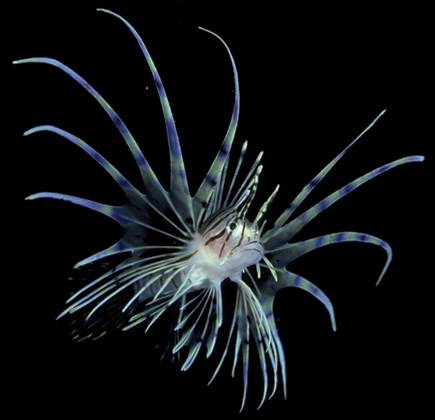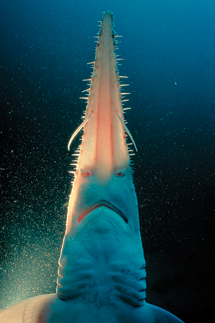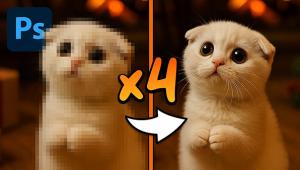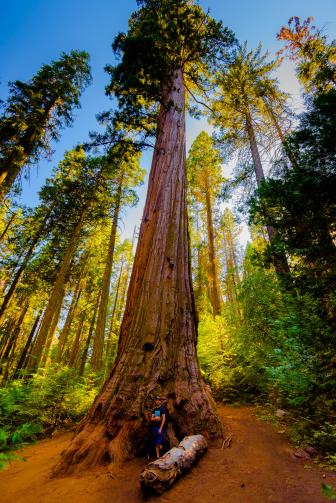David Doubilet; The Take
"Photographers may believe in certain pictures, but they have to have the educated eye of the picture editor."
"We're actually looking at film," David Doubilet says. He's
at the offices of National Geographic magazine, going over the take from a recent
two-month assignment in the South Pacific. The job was shot with both film and
digital, and slides are being viewed on the Garrett box, a device named for
its creator, former National Geographic editor Bill Garrett. "It uses
a Kodak Carousel projector and a series of mirrors to project slides on a viewing
screen," David says. "It's the fastest way of editing film
in the world."
David and his partner Jennifer Hayes came back with 450 rolls of film and about
3600 digital images. "That's about average for one of our stories,"
he says. Over the course of four or five days, everyone concerned with art,
layout, and editorial will be involved in shaping the story.
 |
|
|
"Everything gets processed, that's the first step, of course,"
David says. "I'll go through the film and pull out from those yellow
boxes of slides what I deem useful. Some photographers will go through the boxes
like a reaper through the corn; others pick and choose with a lot more care.
I like to select it all for the first go-around with the picture editor."
David will tell the picture editor which pictures he believes in, but, he says,
"I can't pull a Eugene Smith--that is, try to dominate everything.
If I have a desire to publish a particular picture, I have to have a real reason
for it. It might be an aesthetic reason, or--and this gets me a better
shot at it--it can be a very powerful journalistic reason." As the
picture editor and the photographer begin to boil it down, there's a lot
of give and take. "Photographers may believe in certain pictures,"
he says, "but they have to have the educated eye of the picture editor."
After the run-through with the picture editor, there's a series of projection
sessions of digital and film images with the head of illustration and the head
of photography. "Then it gets bumped up to the editor and the managing
editor," David says. Others involved in the process at one point or another
are the designer and art, editorial, research, and cartographic directors. At
almost every stage of the process, the text, in one form or another, is present.
The final arbitration takes place among the picture editor, the designer, and
the photographer. "It'll come down to between 14 and 60 images on
average," David says, "and those images are developed into a story
and then edited down for the length of the story."
 |
The story is judged and adjusted according to its flow and how it works with
the rest of the issue. "If you have an introspective, photojournalistic
story followed by another introspective, photojournalistic story, then the whole
balance of the magazine has to be considered."
When the story is assembled, it's presented to the editor, who makes the
final decisions. There is, however, one more step: the research department.
As a result of the researchers' work, text may be rewritten.
At almost every point the photographer is present. "Geographic, in my
career here, has always treated the photographer brilliantly and maturely,"
David says. "Their attitude is, here's the photographer we've
backed with our energy and assets, and we ought to hear what he has to say."
Of course, a lot of outstanding pictures don't make the cut. "In
all the lectures I give," David says, "the most common question
goes like this: `It took you two months to shoot hundreds of pictures,
and they only publish 14 of them. Why do you shoot so many pictures?'
And the answer is: `If I knew the 14 pictures that were going to be published,
I'd have been able to shoot only those. And moreover...'--at
this point I take off my glasses and peer over the podium--`...you
realize, of course, that every image that's made is perfect.'"
David adds that the process doesn't always follow the same sequence. "There's
a sense of formality about it," he says, "but there can never be
any kind of universal application of how we do things. It's a very organic
process. It's art, science, and technology all coming together. And it's
a piece of intense craftsmanship with very good people working very hard to
get it right."
David Doubilet is a Nikon "Legends Behind the Lens" featured photographer. The current "Legends" story and an archive of profiled photographers, including David, can be found at www.nikonnet.com. David's website is www.daviddoubilet.com.

















































